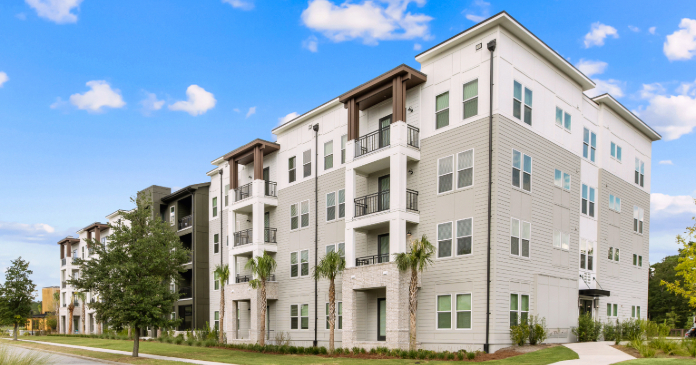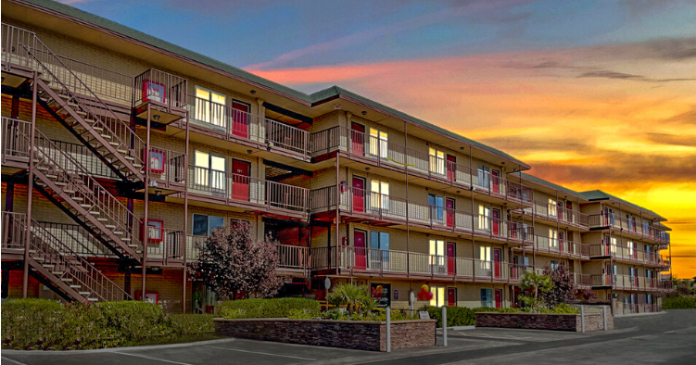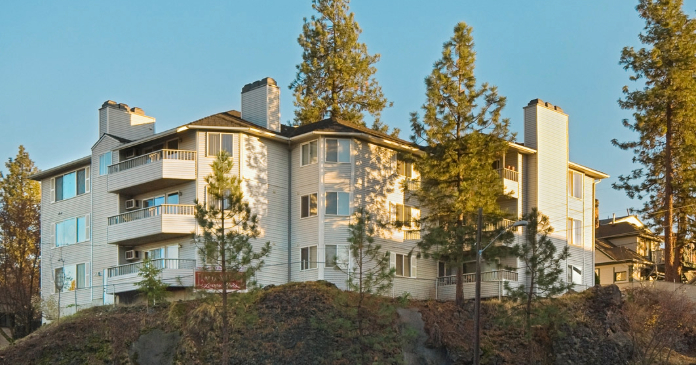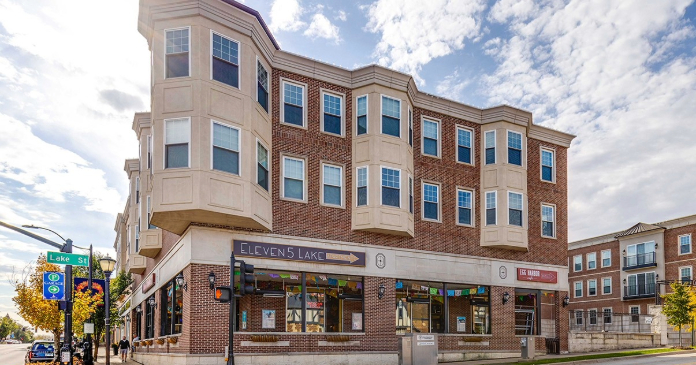The Census Bureau released its quarterly report on home ownership and occupancy for Q2 2022. It showed that the rental housing vacancy rate was 5.6 percent, down from a level of 5.8 percent in Q1 2022.
Different views of vacancies
The headline vacancy rate reported by Census, 5.6 percent in Q2, is for all rental housing in the country, both single-family and multifamily. Census breaks down this figure in various ways, including by the number of units in the building. The chart, below, illustrates this comparison.
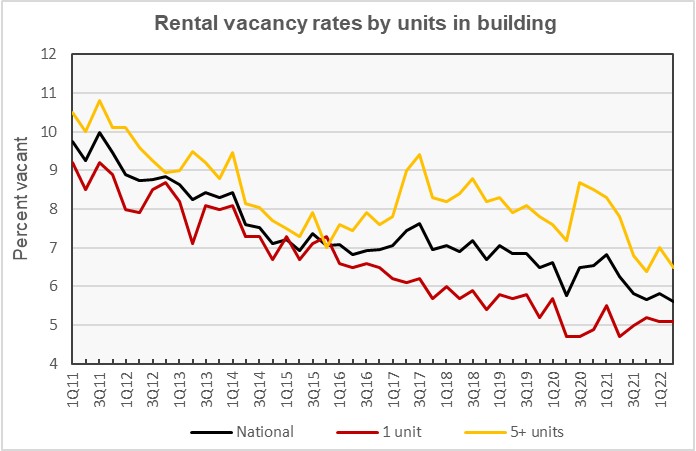
The chart shows that single family rentals have consistently had lower vacancy rates than have multifamily rentals and that the long-term trend has been toward lower rental vacancy rates. However, it should be noted that the rental vacancy rate was typically in the 5 to 6 percent range for most of the decade of the 1970’s so today’s rates represent a return to that era.
By the numbers, the single-family rental vacancy rate was 5.1 percent in Q2 2022, unchanged from last quarter but up from a rate of 4.7 percent in Q2 2021. The rental vacancy rate for units in buildings with 5 or more units was 6.5 percent in Q2 2022, down from 7.0 percent in Q1 2022 but up slightly from 6.4 percent in Q4 2021.
The rental vacancy rate in the core cities of the Census Bureau’s Metropolitan Statistical Areas (MSAs) was 5.8 percent in Q2 2022, unchanged from the prior quarter. The rental vacancy rate in the suburbs of the MSAs was 5.2 percent in Q2 2022. This was down from the 5.6 percent rate reported in Q1 2022.
The rental vacancy rate history for each of the Census geographical regions is show in the next chart, below. The chart shows that vacancies jumped the most in the Northeast and in the Midwest regions in late 2020 to early 2021 as the impact of the pandemic was at its highest. The vacancy rates were much less impacted in the South and West regions. The chart also shows that rental vacancy rates have been consistently lower in the Northeast and West regions than in the South and Midwest regions.

Census reported that over 66 percent of vacant rental units were in structures with 2 or more units. Only about 16 percent of the vacant multifamily units had 3 bedrooms, with 1 and 2 bedroom units each comprising around 40 percent of vacant stock. The median duration of vacancy in Q2 2022 was 2.9 months, up from 2.6 months one year earlier.
Tracking rentership
The Census Bureau reported that 34.2 percent of the country’s 127,990,000 occupied housing units were inhabited by renter households in Q2 2022. This rate is down slightly from that in Q1. The history of the number of occupied housing units and the share of renter households since 2011 is shown in the next chart, below. The chart shows that rentership rose in the aftermath of the global financial crisis but that it has been falling since 2016. The dip in the rentership rate in 2020 may be due to difficulties that Census had in collecting its data during the pandemic lockdowns.
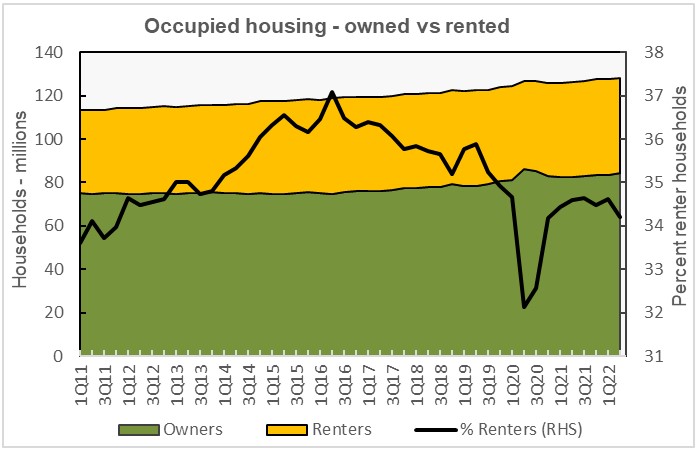
Other than the first year of the pandemic, the number of renter-occupied housing units reported by the Census Bureau since 2016 has consistently been between 43.1 million and 44.2 million. Renter households were reported to fall to 43.8 million in Q2 from 44.2 million in Q1. By contrast, since 2016, the number of owner-occupied housing units has risen steadily from 74.7 million in Q2 2016 to 84.2 million in Q2 2022.
Rent reporting
The Census Bureau also tracks the median asking rents for the country as-a-whole. The history of their findings is shown in the next chart, below. Census reported that rents have moved higher after declining at the end of last year, with the national average rent coming in at $1,314 in Q2 2022.
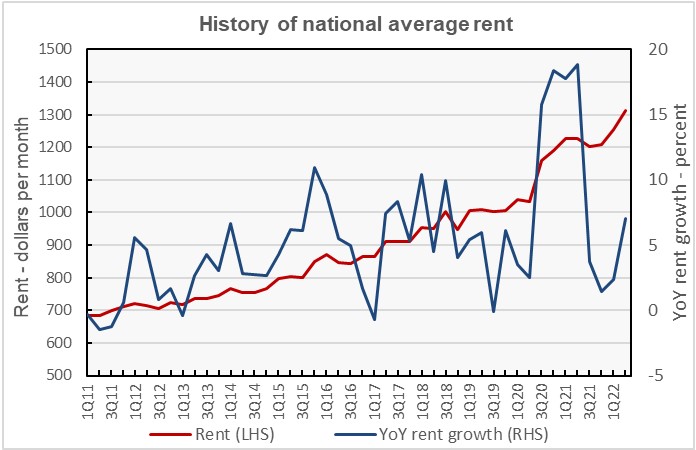
The late 2021 decline in rents was not observed in data collected either by Yardi Matrix or by Apartment List. However, those reports focused on large, professionally managed multifamily properties while the Census report attempts to cover all rental housing in the United States.
The last chart, below, shows the history of the average rent by Census region as a percentage of the national average rent. The chart shows that the Northeast and the West have historically had higher rents than have the South or the Midwest. However, it shows rents in the Northeast falling on a relative basis in recent quarters.
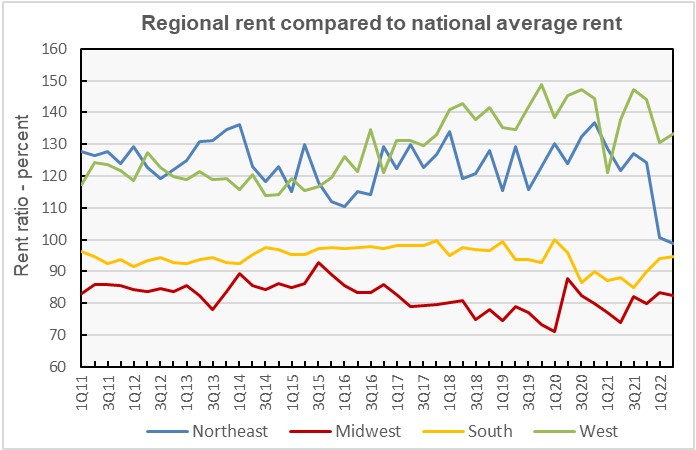
The Census report is called Quarterly Residential Vacancies and Homeownership, Second Quarter 2022. It is available here.




